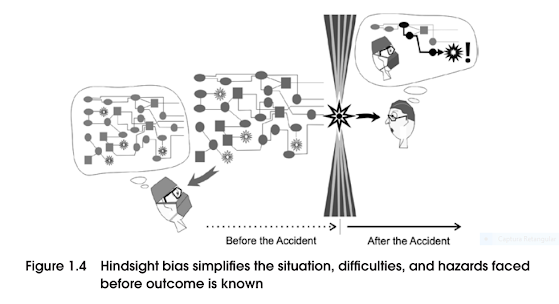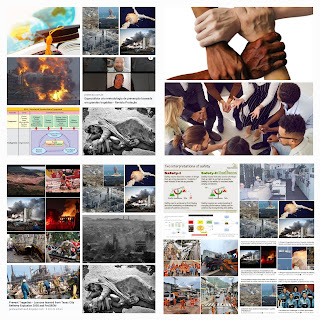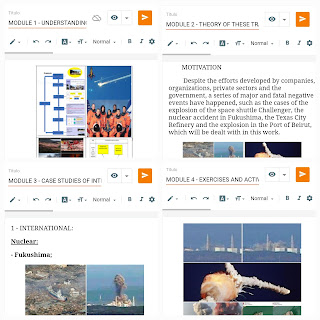First and second stories
Ref: Behind Human Error
The First Story: Stakeholders claim failure is “caused” by unreliable or erratic performance of individuals working at the sharp end. These sharp-end individuals undermine systems which otherwise work as designed. The search for causes stops when they find the human or group closest to the accident who could have acted differently in a way that would have led to a different outcome. These people are seen as the source or cause of the failure – human error. If erratic people are the cause, then the response is to remove these people from practice, provide remedial training to other practitioners, to urge other practitioners to try harder, and to regiment practice through policies, procedures, and automation.
The Second Story: Researchers, looking more closely at the system in which these practitioners are embedded, reveal the deeper story – a story of multiple contributors that create the conditions that lead to operator errors. Research results reveal systematic factors in both the organization and the technical artifacts that produce the potential for certain kinds of erroneous actions and assessments by people working at the sharp end of the system. In other words, human performance is shaped by systematic factors, and the scientific study of failure is concerned with understanding how these factors lawfully shape the cognition, collaboration, and ultimately the behavior of people in various work domains. Research has identified some of these systemic regularities that generate conditions ripe with the potential for failure. In particular, we know about how a variety of factors make certain kinds of erroneous actions and assessments predictable (Norman, 1983, 1988). Our ability to predict the timing and number of erroneous actions is very weak, but our ability to foresee vulnerabilities that eventually contribute to failures is often good or very good.

For more information, videos, and complementary materials, about the Prevention of Tragedies, access the link at the end of this post.
Are we paying attention to the essential issues for the Safety of Organizations?
How many lives, what social, environmental, patrimonial impact, in the image of the organization and others, would be spared?
It is important to look into these issues, and to deepen academic studies, with application in companies, to develop proposals to avoid these tragedies.
Below is the proposal for preventing and mitigating major and fatal negative events, which I developed based on studies and applications in organizations.
It is important to present models, principles and structured forms, together with lessons learned from Major and Fatal Negative Events, which facilitate the analysis of these tragedies, That's why I created the Prevent Tragedy Course - Proactive Safety, Risks, and Emergencies Methodology (ProSREM).
I developed ProSREM, in my Ph.D., in Production Engineering at UFRJ, and used as academic bases: Ergonomics, Resilience Engineering, Integrated Management Systems (Quality, Safety, and Environment), among other methods and tools, and my database to build this proposal, was the biggest and fatal negative events, prominent in the world and in Brazil, I apply this methodology at Fiocruz, where I am a public servant and in organizations, companies, sectors, and activities.
If you are interested in the proposal, send me an email, and when there is the availability of e-learning training, of the Introductory Course of the Proactive Safety Method, Risks and Emergencies, I can contact you, the email is (at the moment, only in Portuguese):
washington.fiocruz@gmail.com
I will send you a form, for your registration, for the e-learning training, or you can access the form, with the initial guidelines at (at the moment, only in Portuguese):
https://drive.google.com/drive/u/2/folders/1A4DBxbZ_cM5mv5j2YxuzqsomyarkSXWI
If you are a professional with experience in the area of safety, risk management, or similar areas, the initial training will consist of two 1-hour meetings, plus guided reading of the modules, complementary materials, and other guidelines, which I will send.
I will assemble these training, in order of registration, so speed up yours, to start the course earlier.
This course will be free of charge and will help me at this stage of my research, for the Doctorate in Production Engineering at UFRJ.
Prevent Tragedy Course - Reports of professionals from the course's study cycle:
- They liked the proposal, it lacks this approach with application in the industry (deficiency in the training), very didactic, motivating for the theme, bringing reality, bringing disasters, it could be avoided, ANDEST (National Association of Teachers in Engineering Safety at Work in Brazil) identified a deficiency in risk management in the training of the safety eng., posts of proactive safety are important, you raise the ball, it is up to people to absorb the lessons of the post, I encourage them to understand what happened, think about all the aspects, awaken this need for analysis.
Access the link to the Proactive Security online course (in Portuguese, but you can translate the Blog pages into your language by clicking on the mouse, on the right side, and translating the page. I'm starting posts in English, and in the future, I'll be offering an e-learning course in English):
See the possibility of liking, commenting, disseminating, and contributing to this work.
Washington Barbosa





Comentários
Postar um comentário